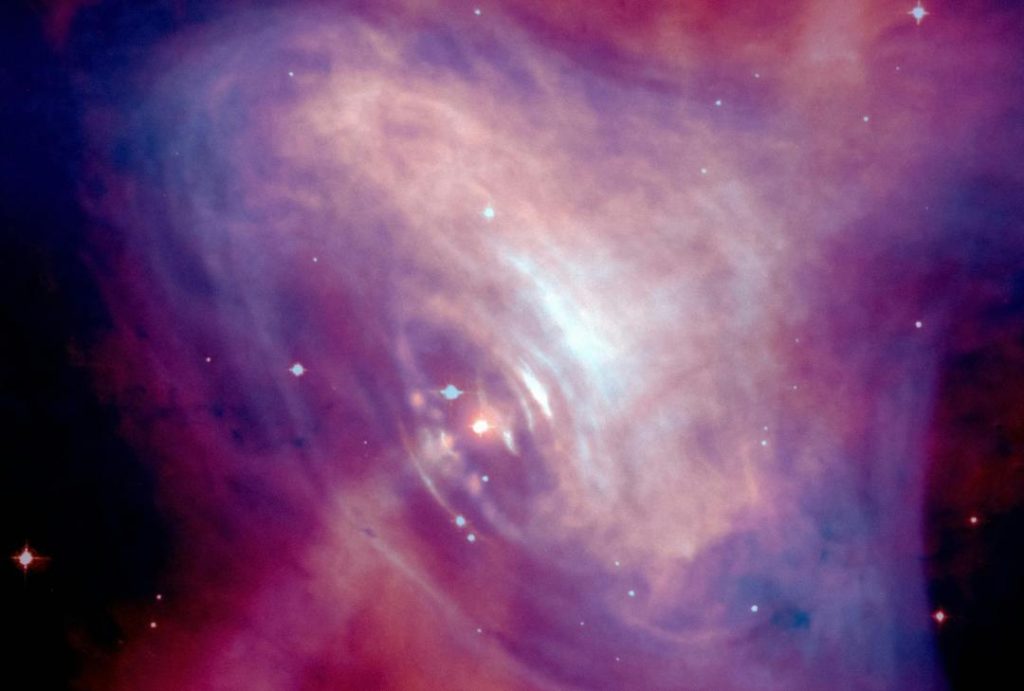
X-Ray Emissions from SXP 138 with NuSTAR: Uncovering the Secrets of Extreme Environments
In the vast expanse of space, binary star systems consisting of a massive star and a compact companion, such as a neutron star or black hole, are of great interest to astrophysicists. These systems offer a unique opportunity to study the extreme environments that exist near these objects, where temperatures and densities are so high that they can melt lead. In recent research, scientists have made a groundbreaking discovery using the NuSTAR (Nuclear Spectroscopic Telescope Array) space telescope, shedding new light on the behavior of matter in these extreme environments.
The study, published in the journal Nature, focused on SXP 138, a binary system consisting of a neutron star and a massive O-type star. The neutron star, with a mass about 1.4 times that of the sun, is in a tight orbit around its companion, causing it to accrete material from the surrounding environment. This accretion process is responsible for the emission of X-rays, which can be detected from Earth.
The NuSTAR team, led by Dr. Varun Bhalerao of the University of California, Berkeley, aimed to study the X-ray pulses emitted by SXP 138 in unprecedented detail. By analyzing the pulses, the researchers hoped to gain insights into the temperature and density of the material surrounding the neutron star. To achieve this, they utilized NuSTAR’s unique capabilities, including its high sensitivity and ability to observe the X-ray spectrum in high resolution.
The results of the study revealed significant variations in the pulse profiles and energy spectra of SXP 138. The pulse profiles, which describe the shape of the X-ray pulses, showed changes in intensity and duration over time. The energy spectra, which depict the distribution of X-ray energies, indicated variations in temperature and density.
One of the most striking findings was the correlation between the rate of material accretion and the temperature of the surrounding material. As the rate of accretion increased, the temperature of the material surrounding the neutron star also increased. This suggests that the material is heated by the gravitational energy released during accretion. The team also found that the density of the material decreased as the rate of accretion increased, likely due to the material being pushed away from the neutron star by the intense radiation it emits.
These findings have significant implications for our understanding of stellar evolution and fundamental physics. The extreme environments found in binary systems like SXP 138 are thought to play a crucial role in the formation of heavy elements, such as iron and nickel, which are essential for the development of life. The study of these environments can also provide valuable insights into the behavior of matter at extremely high temperatures and densities, shedding light on the fundamental laws of physics that govern the universe.
The discovery of these variations in pulse profiles and energy spectra also highlights the importance of continued monitoring of SXP 138 and other binary systems. By tracking these changes over time, scientists can gain a deeper understanding of the complex processes at play in these extreme environments.
In conclusion, the study of SXP 138 using NuSTAR has provided a fascinating glimpse into the extreme environments found in binary star systems. The findings have significant implications for our understanding of stellar evolution and fundamental physics, and highlight the importance of continued research in this area. As we continue to explore the universe, we may uncover even more secrets about the behavior of matter in extreme environments, shedding light on the mysteries of the cosmos.
News Source:
https://researchmatters.in/news/cosmic-clockwork-going-haywire-x-ray-binary-sxp-138-finds-new-study






